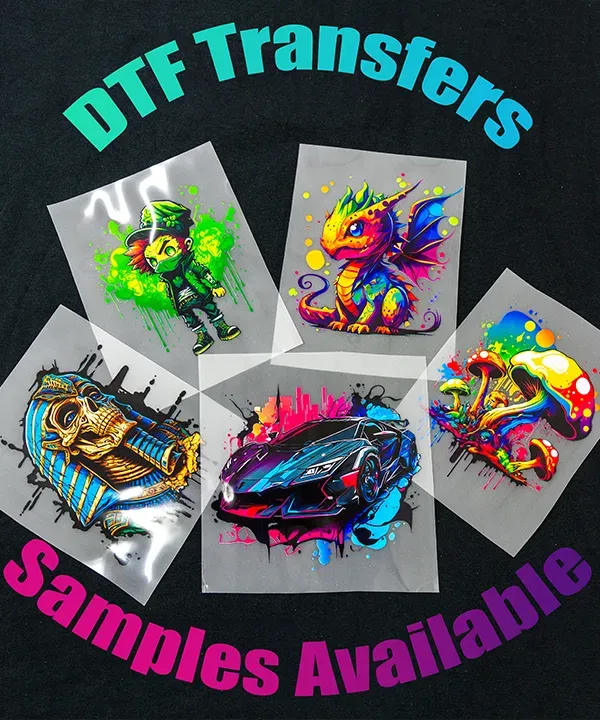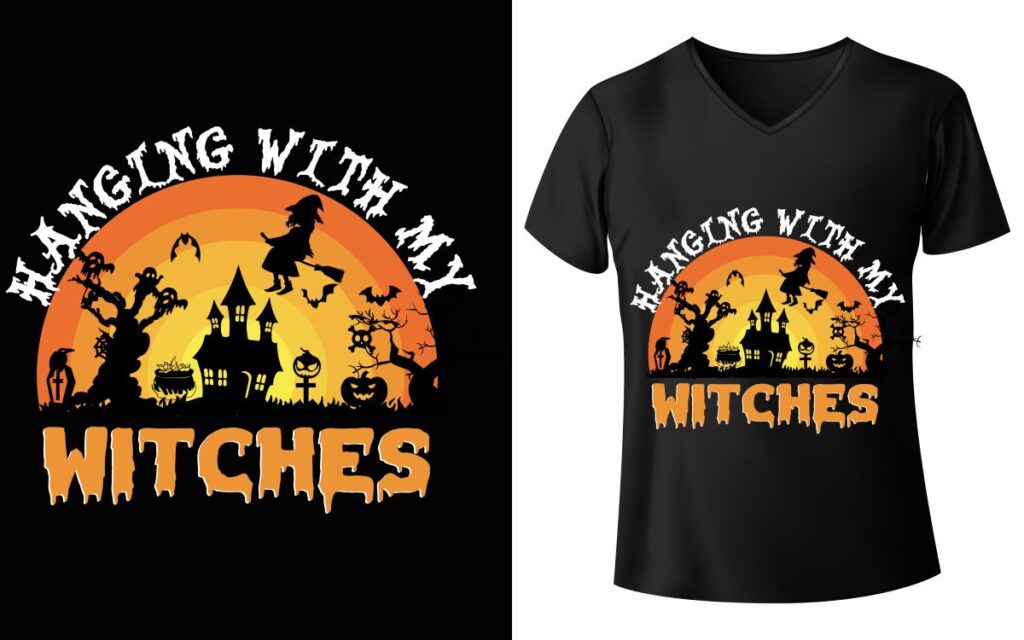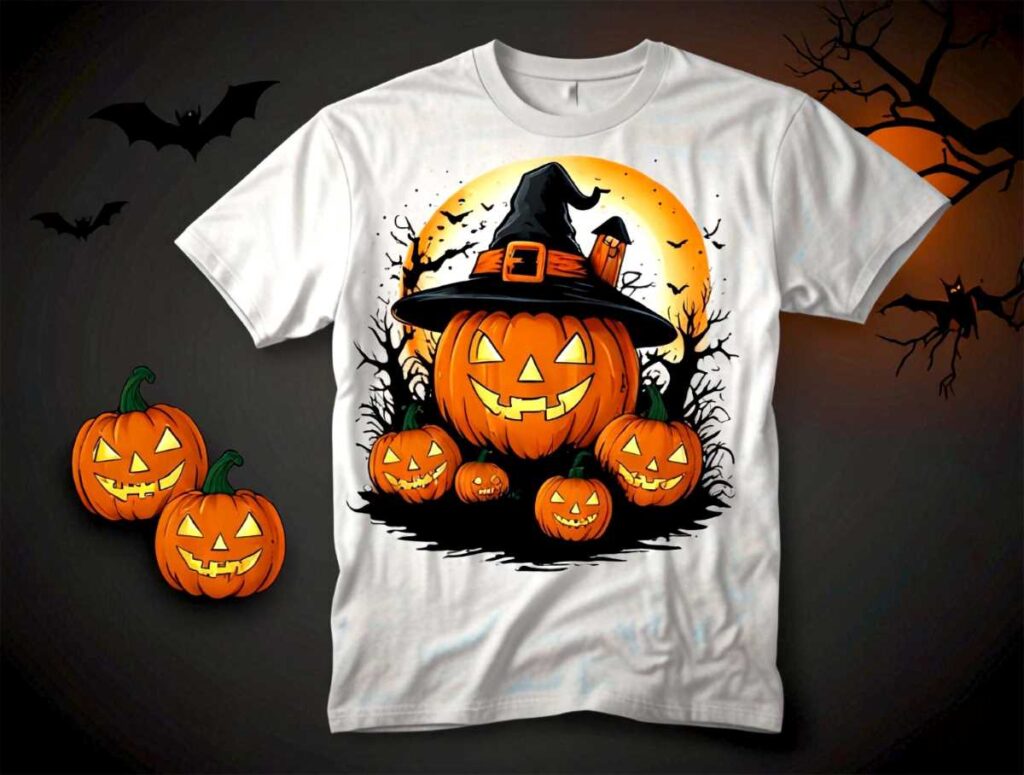DTF Transfers, or Direct-to-Film Transfers, are rapidly revolutionizing the custom apparel printing industry by combining cutting-edge technology with exceptional quality. This innovative method allows designers to create stunning, vibrant graphics on a variety of fabrics, leveraging the advantages of both Direct-to-Garment and traditional printing techniques. With DTF printing, brand owners can produce intricately detailed designs that maintain the soft feel of the fabric, making each piece not just a product but a canvas of artistic expression. As this apparel printing technology gains traction, it empowers businesses to meet the growing consumer demand for unique, customized clothing that reflects individual styles and preferences. In the following sections, we will explore how this dynamic digital printing technique is shaping the future of custom wear and expanding creative possibilities.
Direct-to-Film printing, often referred to as DTF technology, is emerging as a game-changer in the world of customized garment production. This modern printing solution efficiently bridges the gap between traditional screen printing and digital methods, offering unparalleled flexibility and nuance in the apparel printing process. By utilizing a specialty film, DTF enables a rich array of colors and sharp details across various material types, making it a favored choice for designers and businesses alike. As the demand for personalized apparel grows, understanding this innovative printing technique becomes vital for those looking to provide standout, quality products. The advantages of DTF transfers not only cater to the creative aspirations of artists and brands but also align with market trends toward swift, high-quality customization.
Benefits of DTF Printing for Custom Apparel
DTF printing brings a multitude of benefits that make it an attractive option for businesses in the custom apparel market. Firstly, the vivid colors and superior detail achieved with this technology allow brands to showcase intricate designs that capture consumer interest. With the help of Direct-to-Film (DTF) transfers, custom designs can be replicated with precision on different fabric types, ensuring that each garment meets customer expectations for quality and appearance. The versatility of DTF printing means that it can be applied to a wide range of apparel including t-shirts, hoodies, and sports jerseys, thereby catering to diverse market demands.
Moreover, one of the standout advantages of DTF printing is its eco-friendliness. As sustainability becomes a key consideration for customers, DTF’s use of environmentally safe inks and reduced material waste positions it favorably among competitors. Businesses implementing DTF technology can market themselves as environmentally conscious, attracting eco-aware consumers. This combination of quality output and sustainability is a significant selling point that sets DTF printing apart in the ever-evolving landscape of custom apparel.
The DTF Printing Process: How It Works
Understanding the DTF printing process is crucial for anyone looking to adopt this innovative technology. The process begins with a high-quality digital design, which is printed onto a special film using state-of-the-art DTF printers. After printing, the design receives a layer of adhesive powder while the ink is still wet, which is then cured with heat. This step is essential as it ensures the adhesive sticks properly when applied to the garment. Finally, a heat press is used to transfer the design onto the fabric, resulting in a vibrant and durable print that feels soft against the skin.
What makes the DTF printing process particularly efficient is its minimal setup requirements compared to traditional methods like screen printing. There are no lengthy preparations such as creating screens or mixing inks, which significantly reduces turnaround time. This efficiency allows businesses to produce items quickly, accommodating urgent orders and fluctuating market demands. As a result, companies utilizing DTF technology can maintain agility in their operations, a critical factor in today’s fast-paced custom apparel landscape.
DTF Transfers vs. Traditional Printing Techniques
When evaluating custom printing options, many businesses find themselves comparing DTF transfers with traditional techniques like Direct-to-Garment and screen printing. DTF printing offers a notable advantage in versatility; it is compatible with a variety of fabric types, including cotton and polyester blends. This flexibility allows brands to diversify their offerings without investing in multiple setups, making it easier to cater to varying consumer preferences. Furthermore, the quality of DTF prints often surpasses that of traditional methods, with the ability to produce vividly colorful prints and detailed designs.
In addition to quality and versatility, cost-effectiveness is a significant differentiator for DTF printing. Unlike screen printing, which requires setting up screens for each color and design, DTF allows for lower initial investment and is ideal for small batches and personalized items. Many small businesses and individual designers are turning to DTF as a sustainable and profitable solution for their custom apparel needs, shaping a new model for success in the competitive market. This shift highlights the importance of embracing innovative printing technologies to meet evolving consumer demands.
Exploring the Market Potential of DTF Printing
The custom apparel market is witnessing unprecedented growth, and DTF printing is at the forefront of this change. As consumer demands evolve towards personalization and unique designs, businesses that adopt DTF technology can cater to these needs more effectively. The ability to produce vibrant prints and quick turnaround times means that companies can respond rapidly to market trends, making DTF a key player in capturing the attention of discerning customers. Businesses leveraging this technology are often at a competitive advantage, as they can fulfill customized orders with ease.
Furthermore, the potential for DTF printing isn’t limited to small businesses; larger enterprises are also adopting this technology to enhance their production capabilities. Research shows that the demand for customization in apparel continues to rise, indicating a ripe market for brands willing to innovate. By investing in DTF technology, companies not only streamline their operations but also prepare themselves for future trends in the custom apparel landscape, ensuring they remain relevant and appealing to consumers seeking unique and high-quality apparel solutions.
The Future of DTF Printing in Apparel Industry
Looking ahead, DTF printing is poised to redefine custom apparel manufacturing. Industry experts are already recognizing its potential as the preferred printing method due to its efficiency, high-quality outputs, and versatility. As consumer preferences lean more towards customizable experiences, brands adopting DTF will be better equipped to meet individual needs. The ongoing advancements in technology and inks are expected to further enhance DTF capabilities, making it an even more appealing option for apparel printing.
Additionally, as sustainability becomes an essential part of the purchasing decision, DTF’s environmentally friendly attributes will likely boost its market acceptance. Brands that highlight their commitment to sustainable practices through the use of DTF technology can benefit from increased consumer loyalty and attract new customers. Ultimately, the future of DTF printing is bright, promising rapid development and growth opportunities for businesses willing to embrace this revolutionary printing method.
Key Considerations for Implementing DTF Printing
For businesses considering DTF printing, there are essential factors to evaluate before implementation. Understanding the initial investment required for DTF printers and materials is crucial for sound decision-making. While the costs are generally lower than those associated with traditional screen printing methods, it’s important to analyze the return on investment based on production volume and order types. Many businesses find that the flexibility and quality of DTF printing lead to increased customer satisfaction and repeat orders, making it worth the initial costs.
Another key consideration is the training needed for staff to effectively operate DTF printing equipment. Familiarizing employees with the specifics of the process can ensure optimal results and minimize production errors. As with any technology, ongoing education about new developments and practices in DTF printing can help businesses stay competitive in the ever-changing landscape of custom apparel. By being proactive in training and investing in the right equipment, brands can maximize the benefits of DTF printing.
Frequently Asked Questions
What are DTF transfers and how do they work in custom apparel printing?
DTF transfers, or Direct-to-Film transfers, are an innovative method in custom apparel printing. This process involves printing digital designs onto a special film, applying adhesive powder to the wet ink, and using heat to cure everything. Once ready, the film can be heat pressed onto various fabrics, allowing for stunning, durable prints that maintain the feel of the original material.
What advantages do DTF transfers offer over other apparel printing technologies?
DTF transfers provide multiple advantages in apparel printing, including high-quality outputs with vibrant colors and intricate details. They are versatile across a range of fabrics, cost-effective due to lower setup costs, and offer fast turnaround times. Additionally, recent eco-friendly inks make DTF printing a sustainable choice, aligning with modern consumer values.
Can DTF printing be used on all fabric types?
Yes, DTF printing is highly versatile and can be applied to a wide range of fabric types, including cotton, polyester, and fabric blends. This flexibility makes DTF transfers an excellent option for various custom apparel products, from t-shirts to sports jerseys.
Is DTF printing a cost-effective solution for small businesses?
Absolutely! DTF printing is particularly cost-effective for small businesses and individual designers. It requires lower setup costs since there are no screens needed, making it ideal for small batch orders and personalized custom apparel, which are increasingly popular.
How does the turnaround time for DTF transfers compare to traditional printing methods?
DTF printing significantly reduces turnaround times compared to traditional printing methods, allowing manufacturers to fulfill orders more quickly. This efficiency leads to higher customer satisfaction and enables businesses to respond promptly to changing market trends.
Are there eco-friendly DTF inks available for environmentally conscious brands?
Yes, recent developments in DTF printing technology have introduced environmentally friendly ink formulations. This allows brands that use DTF transfers to adopt greener practices, appealing to a broader audience and meeting consumer demand for sustainable products.
| Key Features of DTF Transfers | Details |
|---|---|
| High-Quality Output | Produces vibrant colors and intricate details, while maintaining a soft feel on fabrics. |
| Versatility | Compatible with various fabrics like cotton and polyester, ideal for sports jerseys and hoodies. |
| Cost-Effectiveness | Lower setup costs make it suitable for small batch orders, perfect for individual designers. |
| Fast Turnaround Times | Faster printing speeds compared to traditional methods, enhancing customer satisfaction. |
| Eco-Friendly Options | Recent developments have led to more sustainable, eco-friendly DTF inks to attract conscious consumers. |
Summary
DTF Transfers are revolutionizing custom apparel printing by integrating quality, efficiency, and eco-friendliness into the production process. This cutting-edge technology provides a flexible solution for businesses looking to create stunning, high-quality designs on various fabric types. With its remarkable ability to deliver vibrant colors and intricate details while being cost-effective and quick, DTF Transfers are positioning themselves as the go-to choice for modern apparel customization. As the demand for personalized and sustainable products grows, DTF technology stands poised to reshape the future of the custom apparel market, offering significant advantages for brands that adopt it.



